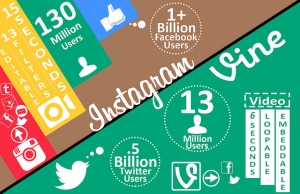
Según informó Business Insider, Facebook bloqueó el día martes a los usuarios para que no compartan artículos legítimos de noticias acerca del coronavirus.
En el informe de Insider, confirmó que el problema tenía algo que ver con sus filtros de spam. A continuación se muestra una publicación incrustada de mi perfil público de Facebook.
Lo sorprendente no fueron los comentarios ni los “me gusta” de esta publicación. Más bien fue el número de acciones para compartirlo que creció exponencialmente. Uno de los usuarios había publicado el siguiente comentario sobre las razones por las que Facebook bloqueó estos artículos:
“Sí, un artículo que volví a publicar se bloqueó debido a sus” estándares de la comunidad “, pero fue solo el reenvío de una publicación de noticias. Extraño”.
Si se preguntaba qué medios de comunicación se vieron afectados, fueron los siguientes:
- Business Insider
- BuzzFeed
- The Atlantic
- The Times of Israel
Estas agencias de noticias afectadas por el error fueron reportadas por Insider. Todavía no está claro qué otros sitios o fuentes se incluyeron en este problema.
Debido al distanciamiento social y las medidas de cuarentena en los Estados Unidos, la posible causa de este etiquetado incorrecto fue la falta de editores de contenido en la red social de Facebook. Es decir, como resultado del envío de empleados ausentes, moderadores de contenido, la empresa confió en el software automatizado. Teniendo en cuenta la cantidad de pánico y ansiedad sobre el virus en línea, esto era definitivamente algo que debería evitarse en el futuro para eventos y sucesos de esta magnitud.
El Vicepresidente de Integridad de Facebook respondió al problema del software del sistema
A continuación se muestra un extracto de la respuesta Alex Stamos:
La publicación incrustada fue reportada por la agencia The Verge. Además, después de que se publicó este informe, Facebook confirmó que había resuelto el problema y restableció las publicaciones afectadas.
Parece que Facebook iba un paso más allá para combatir a dos enemigos: teorías de conspiración y noticias falsas. Resulta como parte de sus esfuerzos para ayudar con la información sobre el coronavirus tiene problemas para enfrentar la información errónea en la plataforma.
Conclusiones
Si se encuentra con este problema, informe el problema a Facebook. Además, comuníquese con las líneas de soporte tradicionales o use Google para ver qué resultados surgen para obtener asistencia.
Tenga en cuenta el contenido que ve por las redes sociales. Antes de compartir una publicación, tómese tiempo para abrir la fuente y leer la información. De lo contrario, puede estar difundiendo rumores o noticias falsas que causen pánico.





